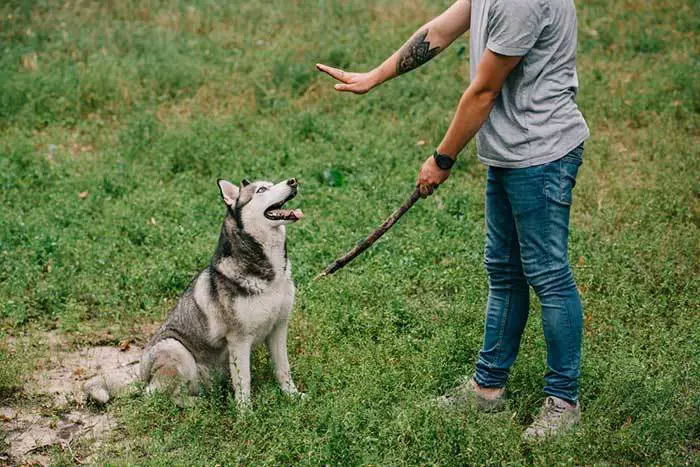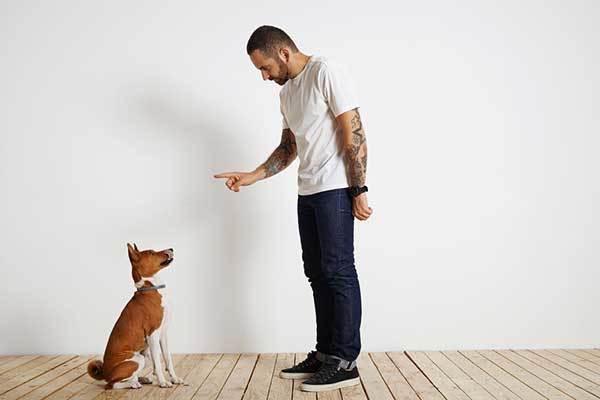The “wait” command is one of the most valuable commands you can ever teach your dog. That’s because it helps to inculcate a sense of self-control and discipline in the animal.
A dog that has been duly trained to wait tends to be more patient and better controlled than those that haven’t received the training.
But like most pet parents, you could be wondering, how do I make my dog to wait?
Well, there is never an easy way out when it comes to training dogs to wait. You’ll have to be patient with the dog even when it appears as though you’re not making any headway.
Read on for a comprehensive guide on how to train your dog to wait.
Why Is It Important To Learn How to Train Your Dog to Wait?
As we already mentioned, the primary reason behind training your dog the wait command is to inculcate discipline and self-control in the dog.
The following are some of the benefits you stand to reap from training your dog how to wait.
✔ The wait command helps to prevent the dog from bolting out of a door as soon as the door is opened.
✔ The command will ensure that the dog stays in the vehicle and doesn’t venture out unless on your say-so. This is particularly important if you’re in a place that could be potentially dangerous for the dog to roam freely, such as in the street or at an animal park.

✔ It helps to foster patience during mealtimes, especially when there are more dogs to feed.
A dog that’s impatient during mealtimes makes it exceedingly difficult for you to prepare its food. In the process, you might end up undercooking its meal or worse yet, incorporate ingredients that dogs should not eat.
✔ It helps to guard against unwarranted confrontations. For instance, your dog might be barking at someone or something that you’re yet to make out yourself.
By shouting “wait,” you allow the dog to hold back as you investigate the cause of its agitation. You can then issue further commands, such as “attack” or “stop” depending on the nature of the threat.
✔ Lastly, the wait command just helps to instill good manners in your pooch by controlling its general impulse. Whenever you shout the command, the dog will always associate it with a call to hold back or wait its turn.
Things to Remember Before Teaching Your Dog to Wait
Before training your dog the “wait” command, you must ensure that the animal is already well-socialized and conversant with other basic commands.
Imagine commanding your dog to wait but then after waiting, you shout “run” but the animal won’t move. This is not only distressing for you but also confusing for your pooch.
So, start by teaching the animal basic cues like “sit,” “stand,” “run,” “stop,” “drop,” etc. Once the dog has mastered these commands, you can now go ahead and teach it how to wait.

Remember that the dog won’t be waiting forever and as such, it should understand exactly what you want it to do after moments of waiting.
Another thing worth noting is that the “wait” command is not to be confused with the “stay” command.
Essentially, “stay” means that you want the dog to remain in a particular position until you issue a release cue. On the other hand, “wait” means that you don’t want the dog to advance forward.
Lastly, remember that puppies are far easier to train compared to mature dogs. So, if you’ve just acquired or are planning to get a pup, consider training the animal while it’s still young. And that goes for all other commands, not just the “wait” command.
How to Train a Dog to Wait At the Door
What You’ll Need
✔ A screen door or gate through which the dog can see you from the other end.
✔ A leash (optional)
✔ A reward

Instructions
i. Place a screen door between you and your dog, ensuring that the animal can still see and hear you.
ii. As soon as the dog gets into a sitting position, ask it to wait.
iii. To do this, hold one of your hands out with your palm facing the dog on the other side of the door.
iv. Open the door gently and if the dog moves in, close it.
v. Go to the other side of the door and repeat the process.
With time, you’ll realize that even after opening the door, your dog remains in a sitting position and only walks through the door on your command.
Whenever you achieve any milestone during the training process, reward the dog accordingly.
For instance, you can treat the dog when it continues to sit after you’ve opened the door and only enters on your command.
Most importantly, ensure that the dog associates the reward with a positive action. Therefore, always issue a treat immediately the dog does something admirable.
How to Teach a Dog to Wait For Food
What You’ll Need
✔ A food bowl
✔ A leash (optional)
✔ A treat

Instructions
i. Grab your dog’s attention by showing it a dog treat.
ii. Once you have the animal’s attention, place the treat inside its empty food bowl and hold the bowl at waist height.
iii. While keeping the treat within sight but out of reach, ask the dog to sit.
iv. Once the dog is seated, do not offer it the treat just yet. Instead, lower the bowl gently till it’s close enough to the animal.
v. If the dog moves closer to you, lift the food bowl higher and shout the “wait” command.
When starting off with the training, your dog might not be very patient and instead, will jump at you and try to grab the treat as soon as it’s within reach.
vi. Repeat the process until the dog demonstrates higher self-control.
Eventually, the animal will resist the temptation of lunging at you until the food bowl rests on the floor.
How to Teach a Dog to Wait In a Crate
What You’ll Need
✔ A crate
✔ A treat
Instructions
i. While your dog is still inside its crate, place one of your hands on the crate door, with your palm pointed out at the dog.
ii. Shout the “wait” command before opening the crate door.
iii. Open the crate door a bit and observe the dog’s reaction.
iv. If the animal moves forward and tries to get out of the crate, close the door and repeat the process.
v. Issue the dog with a reward each time you get the crate door wide open without it lunging towards you or jostling to get out.
NB: This “wait” command training is invaluable when trying to get your dog to stay in the car.

Conclusion
In addition to treats, you can also help your dog to learn the “wait” command faster by proofing.
Proofing is essentially training a dog a new command in different situations, using different distractions and varying the durations. Most importantly, remember that when it comes to training any command to dogs, patience is paramount.
Checkout Our Favorite Dog Products
1. BEST PUPPY TOY
We Like: Snuggle Behavior Toy with Heart Beat & Heat Pack – Ideal toy for new puppies.
2. BEST DOG TRAINING PROGRAM
We Like: Doggy Dan The Online Dog Trainer – Stop any dog problem and raise the perfect puppy with The Online Dog Trainer.
3. BEST FOOD FOR DOGS AND PUPPIES
We Like: Victor Super Premium Pet Food – Ideal for growing puppies and pregnant or lactating females. Also provides sustained energy for sporting dogs and dogs with high physical demands.
4. BEST DOG DNA TEST
We Like: Embark Dog DNA Test – Embark screens for over 250 dog breeds + tests for 170+ genetic diseases including MDR1 drug sensitivity, glaucoma, degenerative myelopathy, and dilated cardiomyopathy, some of the most common adult-onset diseases in dogs.
5. Best Bone Broth for Dogs
We Like: (Solid Gold – Human Grade Bone Broth for Dogs) – Simmered Beef Bone Broth With Turmeric Provides A Nutrient-Dense And Flavorful Addition To Your Dog’s Meal + Rich In Natural Collagen From Beef Bones.




